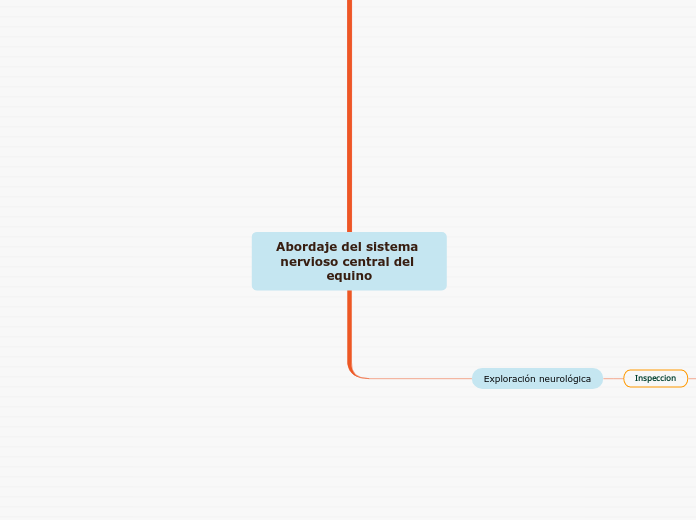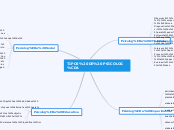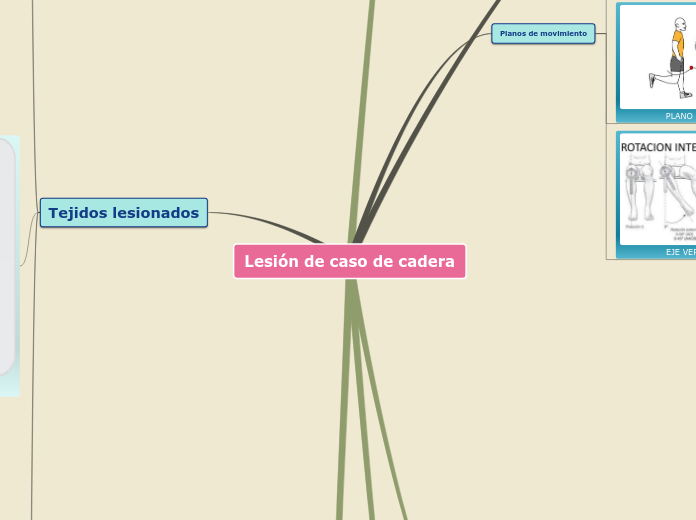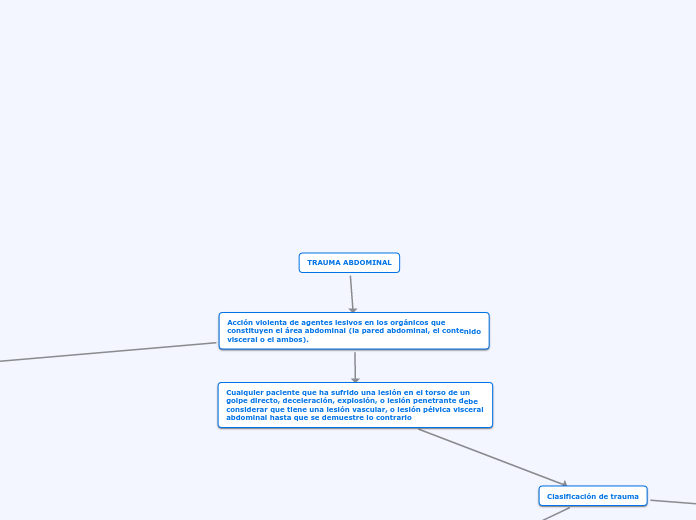Integrantes: Fernanda Diaz-Andrea Jimenez-Natalia Portilla
Abordaje del sistema nervioso central del equino
To name your story, you have to think about the overall message and what you want your audience to understand from the story. Also, make it relevant and easy to remember.
Exploración neurológica
The ending of a story is essential. We all know that if the ending is weak, what happened before loses its importance. So make it unpredictable, but fair. A resolved ending answers all the questions and ties up any loose threads from the plot.
Inspeccion
This is the moment when the main character surpasses the last obstacle and finally faces their greatest challenge.
The climax usually follows one of these patterns:
- realization
- resolution
- choice
Type in your answer.
Examen fisico
Exploracion de pares craneales
XII. N. hipogloso
XI. N. Accesorio
X. N. Vago
IX. N. Glosofaringeo
VIII. N. vestibulococlear
VII. N. Facial
VI. N. Abducents
V. N. Trigemino
IV. N. Troclear
Subtopic
III. N. Oculomotor
II. N. Optico
I. N. Olfatorio
Exploracion de reacciones posturales
Propiosepcion
Simetria
Hipermetria
Hipometria
Ataxia
Debilidad
Exploración de reflejos espinales
Sindrome lumbosacro L4-S3
Lesion entre L7-S3
deficit del reflejo flexor con presencia de sindrome de cauda equina
Lesion caudal a L7
Incontinencia por NMI
Perdida de tono de esfinteres
Vejiga con signos de NMS
Dificultad del vaciado
Espasticidad del esfiter
Lesion entre L6-L7
Reflejo rotuliano normal o aumentado
Afeccion del reflejo flexor
afectacion del reflejo del n. ciatico
Tibial
Gastrocnemio
Lesion entre L4-L6
Lesion unilateral
Reflejo ipsilateral
Reflejo gastrocnemio y tibial craneal intactos
Ausencia o disminucion de relfejos rotulianos
podemos observar
Miembros anteriores normales
Sindrome de neurona motora inferior en miiembros posteriores
Reflejos espinales
Disminuidos
ausentes
Deficit propioceptivo y motor
causando
Paraparesia
Monoparesia
Dolor lumbar
Sindrome toraco-lumbar T3-L3
Lesion grave
Miembro posterior sindrome de neurona motora superior
Reflejos presentes o aumentados
Reflejos espinales en Miembro anterior intacto
porque la intumecencia de C6-T2 no se ve afectada
Perdida del reflejo panicular
Falta de sensibilidad profunda
Paraplejia
Podemos observar
Parecia
Capacidad motora voluntaria
Deficit propioceptivo ipsilateral (monoparesia/plejia)
O tambien
En ambos Miembros posteriores
El animal se mueve menos de lo normal
Posturas antialgidas
Hiperestesia toracolumbar
Sindrome cervico-toracico C6-T2 (dolor cervical)
en lesion severa
Sindrome de horner
Lesion medular en las raices de T1-T3
Perdida de la sensibilidad profunda en los 4 miembros
Difucultad respiratoria
Tetraplejia
Tetraparesia ambulatoria o no
Signos de vejiga neurogenica de NMS
Reflejos espinales de extremidades
Ausencia o disminucion del reflejo panicular
debido a
afectación de la rama eferente C8-T1
Disminuidos o ausentes en MA (sobre todo los flexores)
Sindrome de motoneurona superior en miembros posteriores
Sindrome de neurona motora inferior ipsilateral a la lesion o bilateral en MA
Se pude observar
Lesion severa
Tetraparesia no ambulatoria
Deficit motor y sensorial (ipsilateral)
Sindrome cervical C1-C5 (común dolor cervical)
Evaluar si existe
Mielopatia
En mielopatias cervicales severas
Podemos encontrar
Perdida de sensibilidad profunda en los 4 miembros
Vejiga neurogenica de NMS
Dificultad respiratoria
Sindrome de horner ipsilateral a la lesion bilateral
C1-C5
Reflejo espinal presente o aumentados en MA y MP
La modulacion o inhibicion de NMS sobre la NMI se ve alterada y por ende se produce el reflejo aumentado
Se debe a que
Segmentos intumescencias C6-T2 y L4-S3 se encuentran íntegros y funcionales
SINDROME DE NEURONA MOTORA SUPERIOR
Tetraparesia (4 miembros)
Puede ser
No ambulatoria
El animal no soporta el peso y no anda
Ambulatoria
Cuando el animal es capaz de soportar el peso y andar
Mielopatia central o severa, en donde todos los miembros tienen deficit sensorial y motor
Hemiparesia (un lado del cuerpo)
Deficit propioseptivo ipsilateral a la lesion tanto en extremidad anterior como posterior
Dolor debido a
Compresion del ligamento longitudinal dorsal o radiculopatia
Compresion medular (meninges)
Exploracion de sensibilidad
Sensibilidad al tacto
Pellizco
palpacion
Nos indica
Lesiones compresivas de la medula espinal
Detectar
Exceso de tono en las extremidades
Se detecta por flexion de modo pasivo, así como dolor
Signo de motoneurona superior
Alteracion de la simetria
Atrofia muscular
Evaluar
Extremidades y tronco
Cuello
movimiento de la cabeza del animal (NO HACER SI HAY FRACTURA O LUXACION)
Movimientos laterales
Flexion
Extension
Observacion
Movimientos anormales
Temblores o mioclonias
Determinar si se producen en reposo o movimiento
Postura
Mantenimiento del equilibrio
Puede deberse a alteración cerebelar, vestibular o medular
Valorar coordinacion
Realizar caminata en diferentes direcciones
Comportamiento al subir y bajar (escaleras o una cuesta)
Cambios de sentido
Giros
Evaluar caminata
Descartar dismetría (Alteración cerebelar)
Caracterizada por
Alcance del movimiento
Defecto en la fuerza
Marcha con exceso
Animal capaz de mantenerse en pie
Cuerpo y extremidades
Paresia y/o paralisis
puede deberse a
Lesiones en medula espinal
Cuerpo girado
Apoyo con base de sustentación amplia
Puede deberse a
Alteracion cerebelar
Colocación anormal de extremidades
Cabeza
Ventroflexionada
Girada
Incilinada
Relacion con alteracion
Vestibular
Cerebelar
Comportamiento
Estereotipas
Marcha en círculos
Puede deberse a: problemas en el hemisferio ipsilateral
Demencia
Apoyo de cabeza contra objetos
Desorientacion
Huida
Miedoso
Agresivo
Puede deberse a: neoplasias que afectan la corteza cerebral
Estado mental
Animal comatoso
No responde a ningún tipo de estimulo
Animal estupuroso
Responde únicamente a estímulos de dolor o muy intensos, a veces de forma inadecuada
Animal deprimido
Presenta poca atención al entorno pero logra responder a su nombre y a estímulos
Animal despierto o aletra
El animal responde a estímulos y observa de manera conciente su entorno
Mantenimiento de la conciencia
Hemisferios cerebelares
Diencefalo
Tronco encefalico
Materiales para realizar un examen físico neurológico
The middle of the story is where you add layers of complications that will lead to the end. Reveal more about the character's journey. Did their personality go through changes? How did they overcome the challenges? And as you build up the story’s central conflict, make it more personal to that character. Also, from the middle act, you have to lead into the final act.
Martillo para reflejos
There wouldn't be any tension and excitement in your story if there weren't any obstacles in your character's way.
Linterna u otra fuente de luz
Your character(s) need(s) motivation in order to solve the challenge(s).
Hemostato
Each story has a main character and that character usually needs to solve a problem or challenge. The character's challenge is the one that creates tension throughout the story.
Historia clinica
In the beginning of the story (or the exposition), you will need to introduce the setting and characters. You might also want to introduce the main conflict. This part of the story is important because it gives the reader necessary background information and maybe even a first insight into a character’s personality.
Anamnesis
The setting (time & place) of a story can change throughout the plot.
¿Ha tenido alguna caida o golpe anteriormente?
¿Ha comido algo diferente a su dieta habitual?
Sensory details include sight, sound, touch, smell, and taste. These details are important because they create depth in your setting.
See a few examples below:
- the smell of fresh bread
- the scent of freshly cut grass
- rain falling onto the windshield etc.
¿Tiene sus vacunas al dia? ¿Cuales?
The weather is an important element in your story because it can highly influence the ambiance and the mood of the characters.
¿Ha habido algún cambio comportamental reciente?
The time of the story can also change. It can describe the event of a single day or can include an entire year's plot. Anyway, don't forget to mention it.
¿Cuando empezo el problema?
Your story can take place wherever your imagination will take you to.
For example: in an elevator, in an enchanted forest, etc. Don't forget to give details of the environment each time the setting changes, otherwise, the story can be confusing. Also, mention the seasons as each of them has unique weather and events.
Reseña
Characters are essential to a good story. Usually, the protagonist(s) is/are the most affected by the plot. Introduce a character by focusing on their actions, interests, and occupation, as the physical appearance doesn't make a difference in most cases.
Tener en cuenta
Type in the name of your character.
Peso
Fin zootecnico
Sexo
What is your character's main goal?
fight Evilfind lovedefeat his/her enemyrule the worldmake friendstime travelmake an awesome discoveryOther
Nombre
Which traits best describe the character's personality? Choose more if necessary:
introvertedloyalkindindependentquick-thinkingadventuresomeidealisticsweet-naturedcalmrisk-takercreativewittystrictfussyweirdclumsyharshaggressivecarelessclingingcowardlycrueldeceitfulimpulsiveOther
Edad
Choose the type of your chacter:
Protagonist (main character)Antagonist (main character's opponent)Flat (stereotypical character)Round (his/ her personality develops throughout the story)Static (doesn't evolve as a person throughout the story)Dynamic (dramatical change in personality)Confidant (the main character trusts him/ her)Foil (contrasting character who enhances the personality of another character)Other










